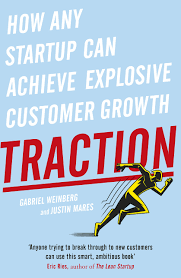By Ramit Sethi | Explained with Real-Life Examples
Introduction: Why Most People Stay Broke
Most people are scared of investing. They fear losing money in the stock market or mutual funds. So, they park all their money in low-interest savings accounts or worse, spend it all.
But fear is not a strategy. Ramit says your financial success is 90% mindset and 10% skill. If you change your beliefs and automate the basics, wealth becomes a by-product.
Chapter 1: Stop Blaming Others for Your Financial Problems
It’s easy to blame others—our parents, employers, or the economy—for why we aren’t financially free. But blaming never helped anyone retire rich.
👉 Real-Life Example:
Ravi, a 28-year-old engineer, used to blame his company’s low salary and rising inflation for his money problems. He spent weekends complaining rather than fixing his finances.
One day, he decided to take control—started tracking his expenses, read Ramit’s book, and automated his SIPs (Systematic Investment Plans). Within 2 years, he saved ₹4 lakhs and built an emergency fund.
Lesson: Stop the blame game. Start with whatever income you have.
Chapter 2: The Importance of Credit Score & Credit Reports
Your credit score is your financial reputation. Lenders use it to decide whether to give you a loan or not. A bad score can ruin your chances of buying a car, home, or even getting a job in some companies.
👉 Smart Credit Card Use Tips:
-
Use your card for planned expenses only (groceries, fuel, bills).
-
Always pay full amount before the due date to avoid interest.
-
Automate your card payments.
👉 Real-Life Example:
Anjali, a freelancer, once missed two credit card payments and her score dropped from 765 to 625. She couldn’t get a business loan.
She followed Ramit’s strategy:
-
Paid off the balance.
-
Automated future payments.
-
Requested her bank to update the report.
In 9 months, her score climbed back to 740.
Lesson: Use credit cards wisely—they can help or hurt your financial growth.
Chapter 3: Choose the Right Bank with High Interest Rates
Most traditional banks offer low interest rates and charge hidden fees. Your money should work for you, not the other way around.
| Bank | Savings Rate |
|---|---|
| SBI | 2.70% |
| IDFC First Bank | 4.00%+ |
| AU Small Finance Bank | 6.00% |
3 Options to Choose Your Banking Setup:
-
Lazy Option – Keep all accounts in the same old bank. (Avoid)
-
Normal Option – Have savings & current accounts in different banks.
-
Smart Option – Use online banks with higher rates + no fees.
👉 Real-Life Example:
Nikhil kept ₹2 lakhs in SBI for years, earning ₹450 per year. He switched to IDFC, earning ₹8,000/year instead. That’s free money, just for being smart.
Lesson: Choose banks with no fees and high-interest returns.
Chapter 4: Conscious Spending Plan
Ramit doesn’t believe in budgeting every rupee. Instead, he recommends a Conscious Spending Plan:
4-Part Budget Rule:
-
60% – Fixed Costs (rent, EMI, groceries)
-
10% – Investments (mutual funds, retirement)
-
10% – Savings
-
20% – Guilt-Free Spending (travel, gadgets, food)
👉 Real-Life Example with Numbers:
Priya, 30, earns ₹60,000/month. Her spending plan:
-
₹36,000 – Rent, bills, groceries
-
₹6,000 – SIP in index mutual funds
-
₹6,000 – Emergency savings account
-
₹12,000 – Shopping, dining, Netflix, etc.
She also uses auto-debit to split salary across accounts using apps like Jupiter or Fi.
Lesson: Spend without guilt—if you plan it in advance.
Bonus: Ramit’s 6-Week Rich Life Plan (With Real-Life Setup)
You don’t need to do everything today. Ramit provides a simple 6-week plan to automate your money life.
Week 1: Optimize Your Saving Plan
-
Set up an emergency fund (3–6 months of expenses).
-
Choose a high-interest savings account.
Rohit used AU Small Finance Bank for this.
Week 2: Beat the Banks
-
Close unnecessary accounts.
-
Avoid banks that charge ATM and minimum balance fees.
-
Use netbanking for transactions.
Week 3: Start Investing
-
Begin with ELSS Mutual Funds or Index Funds (SIP of ₹1,000 to ₹5,000).
-
Use apps like Groww, Kuvera, or Zerodha Coin.
Rohit started ₹3,000 SIP in HDFC Index Fund.
Week 4: Conscious Spending Plan
-
Setup 4 accounts for different purposes.
-
Split salary automatically on 1st of every month.
-
Track only 2 things: Total savings & guilt-free spending.
Week 5: Save Big on Big Wins
-
Negotiate bills (internet, credit card fees).
-
Cancel unused subscriptions.
-
Focus on saving ₹500–₹1000 monthly through smart hacks.
Week 6: Kill the Myths
-
Investing is NOT gambling.
-
You don’t need to be an expert to start.
-
Time in the market is more important than timing the market.
💡 Key Takeaways from the Book
-
Blaming others keeps you poor. Responsibility makes you rich.
-
Automate your credit card payments to boost your credit score.
-
Use online banks with higher returns.
-
Spend consciously, not emotionally.
-
Automate your finances in 6 weeks—then forget about it.
📞 Call to Action
Want help setting up your Conscious Spending Plan or automating your SIPs?
📲 Book a FREE one-to-one financial consultation:
👉 www.mycashflowhub.com
📞 Call/WhatsApp: 8850511869
Let’s build your rich life—starting today.
If you found this blog helpful, share it with friends and subscribe for more financial wisdom. ✅




